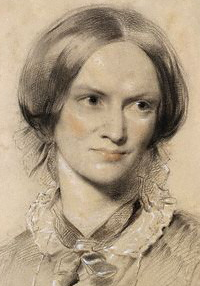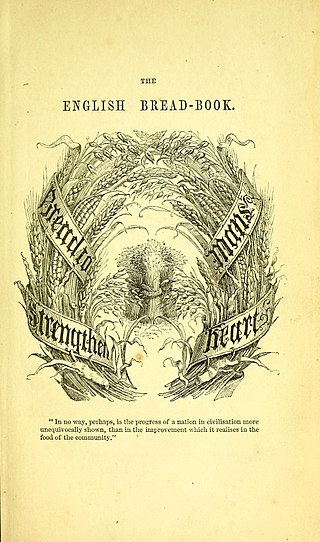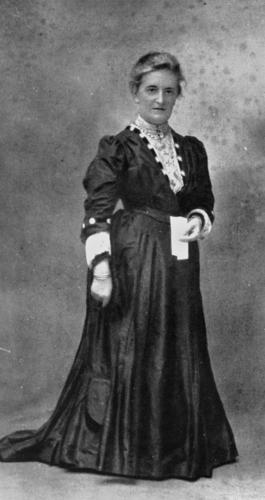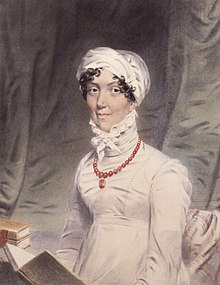
Anne Brontë was an English novelist and poet, the youngest member of the Brontë literary family.

Charlotte Brontë was an English novelist and poet, the eldest of the three Brontë sisters who survived into adulthood and whose novels became classics of English literature. She is best known for her novel Jane Eyre, which she published under the androgynous name Currer Bell. Jane Eyre went on to become a success in publication, and is widely held in high regard in the gothic fiction genre of literature.

Emily Jane Brontë was an English novelist and poet who is best known for her only novel, Wuthering Heights, now considered a classic of English literature. She also published a book of poetry with her sisters Charlotte and Anne titled Poems by Currer, Ellis and Acton Bell with her own poems finding regard as poetic genius. Emily was the second-youngest of the four surviving Brontë siblings, between the youngest Anne and her brother Branwell. She published under the pen name Ellis Bell.

Jane Eyre is a novel by the English writer Charlotte Brontë. It was published under her pen name "Currer Bell" on 19 October 1847 by Smith, Elder & Co. of London. The first American edition was published the following year by Harper & Brothers of New York. Jane Eyre is a bildungsroman that follows the experiences of its eponymous heroine, including her growth to adulthood and her love for Mr Rochester, the brooding master of Thornfield Hall.
This article contains information about the literary events and publications of 1798.

The Brontës were a nineteenth-century literary family, born in the village of Thornton and later associated with the village of Haworth in the West Riding of Yorkshire, England. The sisters, Charlotte (1816–1855), Emily (1818–1848) and Anne (1820–1849), are well-known poets and novelists. Like many contemporary female writers, they published their poems and novels under male pseudonyms: Currer, Ellis, and Acton Bell. Their stories attracted attention for their passion and originality immediately following their publication. Charlotte's Jane Eyre was the first to know success, while Emily's Wuthering Heights, Anne's The Tenant of Wildfell Hall and other works were accepted as masterpieces of literature after their deaths.

Carry On Teacher is a 1959 British comedy film, the third in the series of 31 Carry On films (1958–1992). It was released at the Plaza Cinema in London on 3 September 1959. It features Ted Ray in his only Carry On role, alongside series regulars; Kenneth Connor, Charles Hawtrey, Kenneth Williams and Hattie Jacques. Leslie Phillips and Joan Sims make their second appearances in the series here, having made their debuts in the previous entry, Carry On Nurse. A young Richard O'Sullivan and Larry Dann – making the first of his four Carry on appearances – turn up as pupils. In 2023, Dann dedicated a chapter of his autobiography "Oh, What A Lovely Memoir" to share his memories of this production. The film was followed by Carry On Constable 1960.
Events from the year 1798 in Great Britain. (See also 1798 in Ireland, then a separate kingdom although under the same monarch.)

Crofton is a village in West Yorkshire, England, about 4 miles (6 km) south-east of Wakefield, some 6 miles (10 km) to the west of the town of Pontefract, and 4 miles (6 km) from the town of Featherstone. The population of the civil parish at the 2011 census was 5,781.

Milham Ford School was a girls' secondary school in Oxford, England, located in the suburb of New Marston on Marston Road. It was founded in East Oxford in the 1880s and closed in 2003.

The Cowan Bridge School was a Clergy Daughters' School, founded in the 1820s, at Cowan Bridge in the English county of Lancashire. It was mainly for the daughters of middle class clergy and attended by the Brontë sisters. In the 1830s it moved to Casterton, Cumbria, a few miles away.
Maria Brontë was the eldest daughter of Patrick Brontë and Maria Brontë, née Branwell.
Fanny Umphelby was a British author who wrote a popular primer known by the shortened title The Child's Guide to Knowledge, ... by a Lady.

Julia Corner (1798–1875), also known as Miss Corner, was a British children's educational writer who created Miss Corner's Historical Library.

Frances Mary Richardson Currer was a British heiress and book collector.

The English Bread Book is an English cookery book by Eliza Acton, first published in 1857. The work consists of a history of bread making in England, improvements to the process developed in Europe, an examination of the ingredients used and recipes of different types of bread.
Christina Kay was a Scottish school teacher and served as an inspiration for Miss Jean Brodie, the leading character in the novel The Prime of Miss Jean Brodie by Muriel Spark.

Eliza Ann Fewings was an teacher and school principal in Wales and Australia. She led a pioneer school of secondary education for girls in Wales for a decade. Later in Brisbane, Queensland, Australia, she was the head of Brisbane Girls' Grammar School after which she founded her own school, the Brisbane Girls High School.
Sarah Lawrence (1780–1859) was an English educator, writer and literary editor. She ran a girls' school in Gateacre near Liverpool, and was a family friend of the Aikins of Warrington, and an associate of members of the Roscoe circle.













